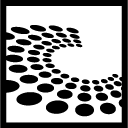23C3 - 1.5
23rd Chaos Communication Congress
Who can you trust?
| Referenten | |
|---|---|

|
Achim Friedland |
| Programm | |
|---|---|
| Tag | 3 |
| Raum | Saal 2 |
| Beginn | 11:30 |
| Dauer | 01:00 |
| Info | |
| ID | 1634 |
| Veranstaltungstyp | Vortrag |
| Track | Science |
| Sprache | englisch |
| Feedback | |
|---|---|
|
Haben Sie diese Veranstaltung besucht? Feedback abgeben |
How to squeeze more performance out of your wifi
Cross-layer optimization strategies for long-range IEEE 802.11e based radio (mesh) networks

Most of today's long-range wireless mesh or point-to-point links suffer from a high overhead during channel access, frequent link failtures and the lack of taking a real advantage of the mesh network structure. This leads to a really bad performance for TCP-like traffic compared to UDP traffic over this links. We want to present your two different ideas for optimizing throughput and delay without breaking any wifi-standard (or at least not too much ;).
Most of today's wireless mesh networks can be characterised by the use of cheap half-duplex transmission technologies like IEEE 802.11. It suffers from a high overhead during channel access, frequent link failures and the lack of taking a real advantage of the mesh network structure. All this may result in low throughput and high end-to-end delay. To improve both properties, one may use diversity achieved through multiple channels directional high gain antennas, polarization multiplex and frame aggregation techniques. Additionally -- in order to take an advantage of the mesh network structure -- it is possible to divide the up- and downstream of a wifi point-to-point link into two seperate links. This eliminates the concurrency between both directions. Results of calculations, simulations and measurements show an improved distribution of delay and a significant higher throughput especially for TCP-like applications. Both values can furthermore be improved by an optimization of the IEEE 802.11e quality-of-service parameters.
